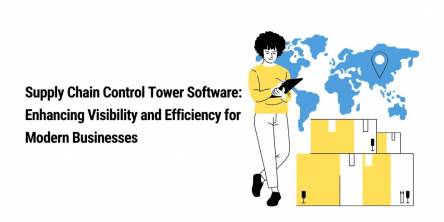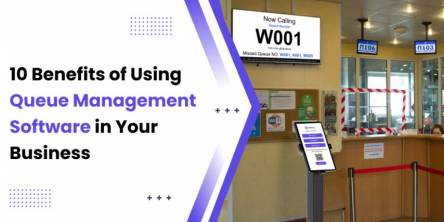10 Ways to Encourage Employees to Use GPS Monitoring Systems

In recent years, a small number of cases highlighting the potential dangers of GPS tracking in the workplace have made the Irish headlines.
For example, one company was ordered to pay 40,000 EUR in compensation to a former employee when they were found guilty of monitoring him without his knowledge.
The business believed the individual may have been filing false expenses, and ultimately let him go. However, the Employment Appeals Tribunal (EAT) found that the employer’s underhand tactics could be seen as a breach of trust.
That last point is a key reason why businesses looking to integrate GPS tracking into their everyday operations must do so in the most ethical way possible. Employees may be wary of being tracked during their shifts, believing that they are being ‘spied on’. It’s vital to show them how and why the technology is a benefit to everyone involved.
If you’re looking to introduce GPS monitoring systems to your workforce, here are 10 ways to encourage their participation and get them on board.
1. Inform all employees at the same time
Depending on the size of your workforce, the way in which you announce the GPS tracking’s implementation will vary. For a smaller business, you should gather all departments together and tell them face to face. For larger enterprises, you may need to spread the news via email instead.
However you do it, be sure to tell them at the same time. If one department hears about it before another, there may be some accusations of favouritism and rumours will cause anxiety.
2. Be transparent about your reasons
Always be upfront about your motivation to incorporate GPS tracking into employees’ work activities: this is essential to maintain a strong bond of trust between yourself and the workforce.
If it relates to a drop in revenue or some lax behaviour on certain individuals’ part, don’t be afraid to highlight that. Of course, avoid using names, but suggest that the entire company’s efforts need to be more harmonious to bring stronger results.
3. Give them a chance to respond
Don’t simply announce the monitoring scheme and send your employees back to their work. Give them a chance to have their say.
Some workers may be in favour of the change. Others will have concerns. A few may even become angry and demand answers.
That’s okay. That’s natural. You need to let them ask their questions and speak their mind. Otherwise, they are likely to feel disrespected and undervalued.
4. Respect their feedback
Make sure you actually listen to your employee’s thoughts on the implementation of GPS tracking and engage with them.
If they ask for more information on the technology to be used (whether an app, a wristband, a badge etc.), provide it. You need to demonstrate that you truly value your workforce, and understand that if you lose their trust or respect, their morale will drop significantly.
As will their performance.
5. Have managers and directors tracked too
The extent of tracking within your business will vary depending on the type of work involved.
If you run a haulage firm, your monitoring is likely to assess drivers’ habits, fuel consumption, speed etc. If your enterprise is office-based, you will be more interested in overseeing how long employees spend at their desk, how they interact with each other, and so on.
The important thing is, don’t make managers or directors exempt if the tracking could apply to them too. If they drive trucks or work in the same office as everyone else, they need to be subject to the same monitoring.
This is basically you are ‘putting your money where your mouth is’ and eliminating any risk of perceived favouritism.
6. Offer a fair trial period
One way to put your workforce at ease is to introduce the GPS tracking system for a trial period: perhaps two weeks, one month, or three months. Avoid anything longer, though, as employees need to feel as if the change isn’t sudden.
Setting a trial period gives you a chance to gather vital data and see the difference the technology makes, to prove how successful monitoring has been.
7. Make sure they understand the technology
Your workforce should be trained in the set-up and performance of the tracking system. Whether this is a wearable item or an app on their phone, they have to feel comfortable with it and understand how it functions.
This is especially important if the app is on their personal phone, as they need to know how to deactivate it outside working hours. Any implication that they will be tracked in their own time can cause severe trust issues and steer you into a murky legal area.
8. Take their post-trial views on board
Once the trial period is over, take your employees’ thoughts in a company meeting or survey. Insist on full honesty – ask how using the monitoring technology made them feel, how it has affected their work, and whether they would be happy to stick with it.
Make sure you don’t make GPS tracking permanent without giving your workforce their say.
9. Share the system’s feedback
What value has the monitoring system brought to your business?
The results of the trial period are key to prove the technology’s worth, and you should share them with your employees to show the overall benefits. Make a presentation to your workforce all together or one department at a time, highlighting the improvements that have been made on their performance and for the company as a whole.
Seeing tangible results of the new system can help to encourage and engage your employees’ interest in the technology.
10. Brainstorm ways to proceed together
Be open to ideas from the entire company about how GPS tracking should be implemented in the future. What changes could be made to the devices used, for employees’ comfort? Should it be utilised every day, or just at scheduled times?
Individuals within your business may have better ideas to enhance the outcome of monitoring than you do – be willing to take their ideas on board for the good of the company.
Similar Articles
Simplify wealth management with advisor-directed trusts—separate roles, tailored investments, and expert oversight for efficient and flexible asset growth.
Let's face it — IT costs are eating your budget, and your CFO is giving you that look again. The one that says, "Find cuts or I will."
Sponsorship platforms are critical in scaling partnership programs in today's fast-paced digital world. Leveraging advanced sponsorship management software allows businesses to seamlessly manage their sponsorship activities, streamline processes, and optimize relationships with partners.
In today’s fast-paced world, businesses are constantly searching for ways to make their supply chains more efficient. Whether it’s managing stock levels, keeping customers happy, or reducing costs, there’s no room for delays or mistakes
Learn how Passive RFID tracking revolutionizes event management with seamless check-ins, real-time attendee insights, and enhanced security. Transform your next event!
The demands of the modern world dictate that a firm must provide its customers with excellent experiences. An essential aspect of this process, which is often randomly overlooked, however, remains how companies handle and organize queues
Discover how sustainable practices and technology in fleet management reduce costs, cut emissions, and drive eco-friendly operations for a greener future.
Boost your business success with CRM strategies. Learn how to enhance customer relationships, streamline operations, and drive performance with key insights.
Discover effective strategies to reduce employee turnover, improve retention, and build a motivated workforce by enhancing work culture, management, and compensation.









